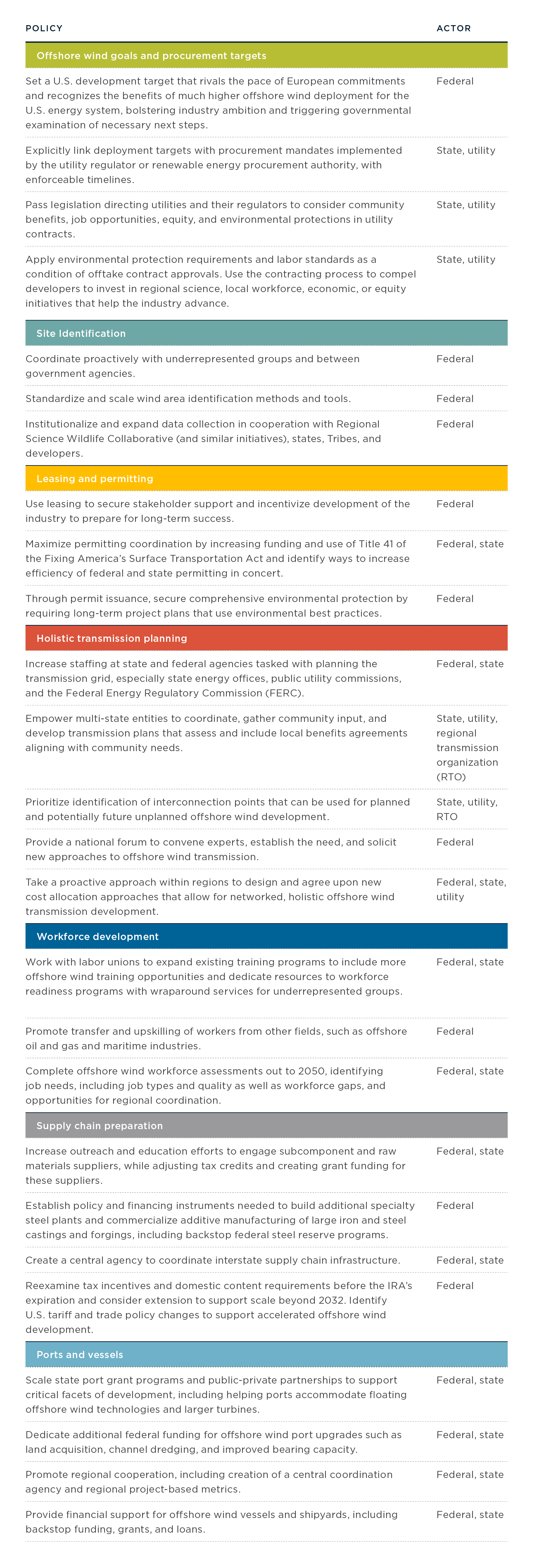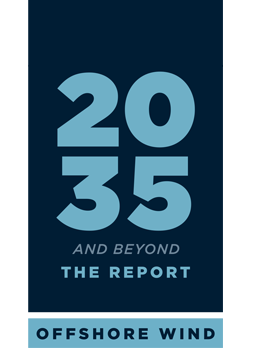In order to seize this opportunity, robust national, regional, and state policy is needed this decade to build the domestic supply chain, foster community engagement, and build supporting infrastructure.
Why The U.S. Federal and State Governments Must Set Offshore Wind Goals
Deploying sufficient offshore wind projects to reach the United States’ potential and play a substantial role in our clean energy economy will require the federal government and states to bolster turbine deployment and the large infrastructure projects needed to support offshore wind construction and operation.
Federal and state governments must set offshore wind goals and procurement targets that align with U.S. climate commitments. In doing so, relevant government agencies must lead deployment by identifying offshore wind sites at scale. Appropriate policy can accelerate the leasing-to-permitting timeline while enhancing engagement with communities, Tribes, labor representatives, and environmental organizations to build a sustainable industry. In order to improve interconnection timelines and reduce costs, government agencies should plan for offshore wind transmission to optimize across multiple projects.
Developers and federal and state agencies (including Department of Energy, Department of Labor, and state economic development boards) should invest in equitable workforce development, particularly for local communities hosting offshore wind infrastructure and current or former fossil fuel workers. The federal government must incentivize a domestic supply chain through increased outreach and education to suppliers and improved financing and incentives. Finally, the federal government must lead the way through stronger financial support and improved regional coordination to prepare the ports, vessels, and shipyards needed to support offshore wind construction.




